RSI-Mod Made Simple
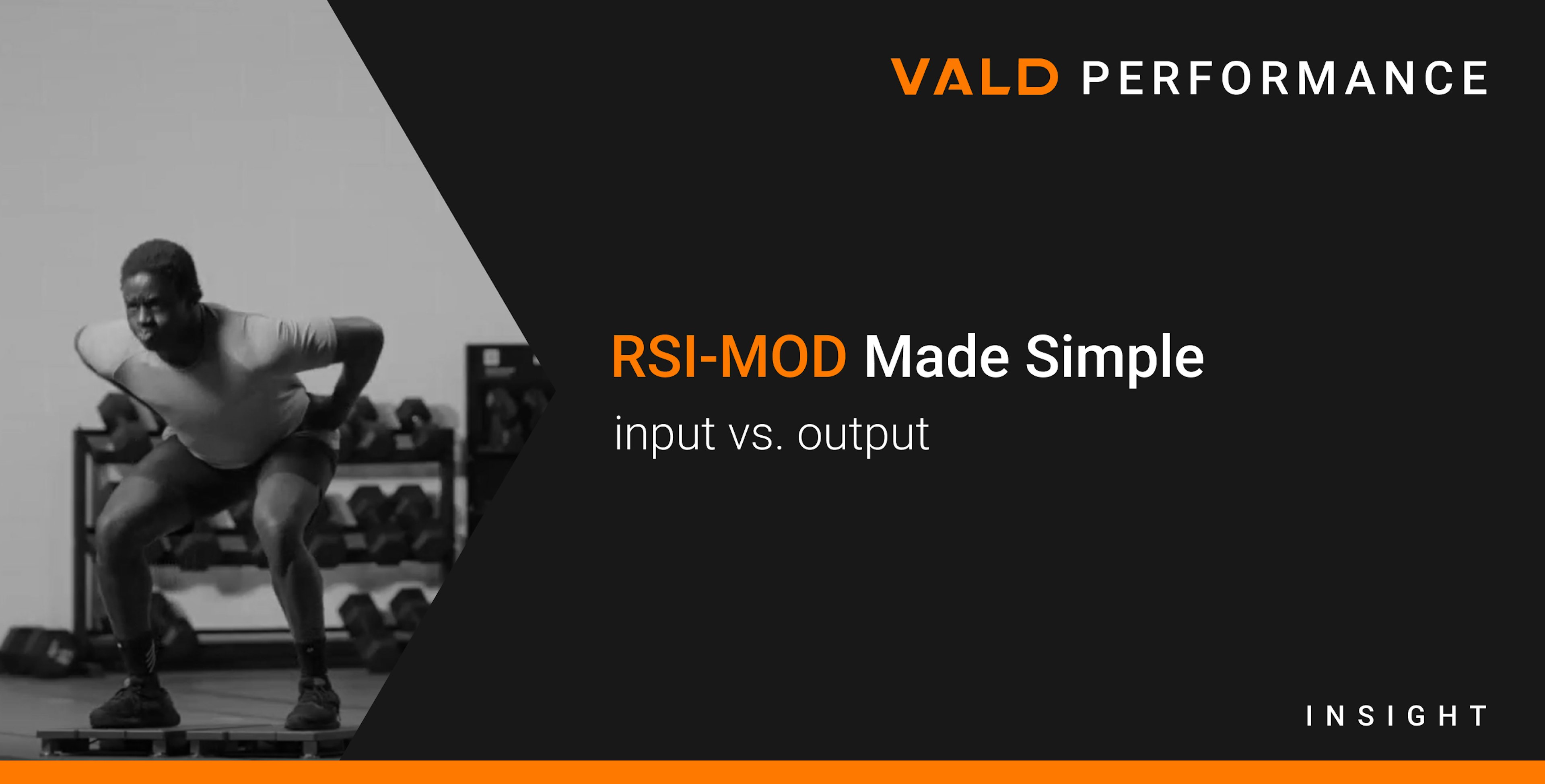
Sasha Birge – Physical Therapist, ATC, CSCS at VALD
RSI-modified made simple: a matter of input vs output.
Simply put: RSI-modified (reactive strength index) is a ratio of input to output – the input is represented by time spent on the ground generating the force to jump, and the output is the height of that jump. The latter is relatively easy to measure. The former, not so much.
So, why measure both? Short answer: to monitor fatigue.
The human body is tremendously resourceful when it comes to accomplishing a physical task (“the output”). However, the strategy for achieving that task (“the input”), can look a whole lot different when we are fatigued.
The human body is tremendously resourceful when it comes to accomplishing a physical task (“the output”)… However, the strategy for achieving that task (“the input”), can look a whole lot different when we are fatigued
How is RSI-modified measured?
RSI-modified is typically measured using force plates, during a countermovement jump (CMJ) test.
ForceDecks measures a CMJ test automatically and allows for all the data from the movement to be captured in real time and displayed to the clinician as a force trace.
The jump and the phases therein are automatically detected by the software, and all metrics relevant to the jump are calculated instantaneously. For a CMJ, the contraction time begins as soon as movement is initiated and ends at the point of take-off. RSI-modified is the relationship between contraction time and jump height.
So, what does it look like?
| Rep 1: short contraction time | Rep 2: long contraction time |
| Force Traces and Phases | 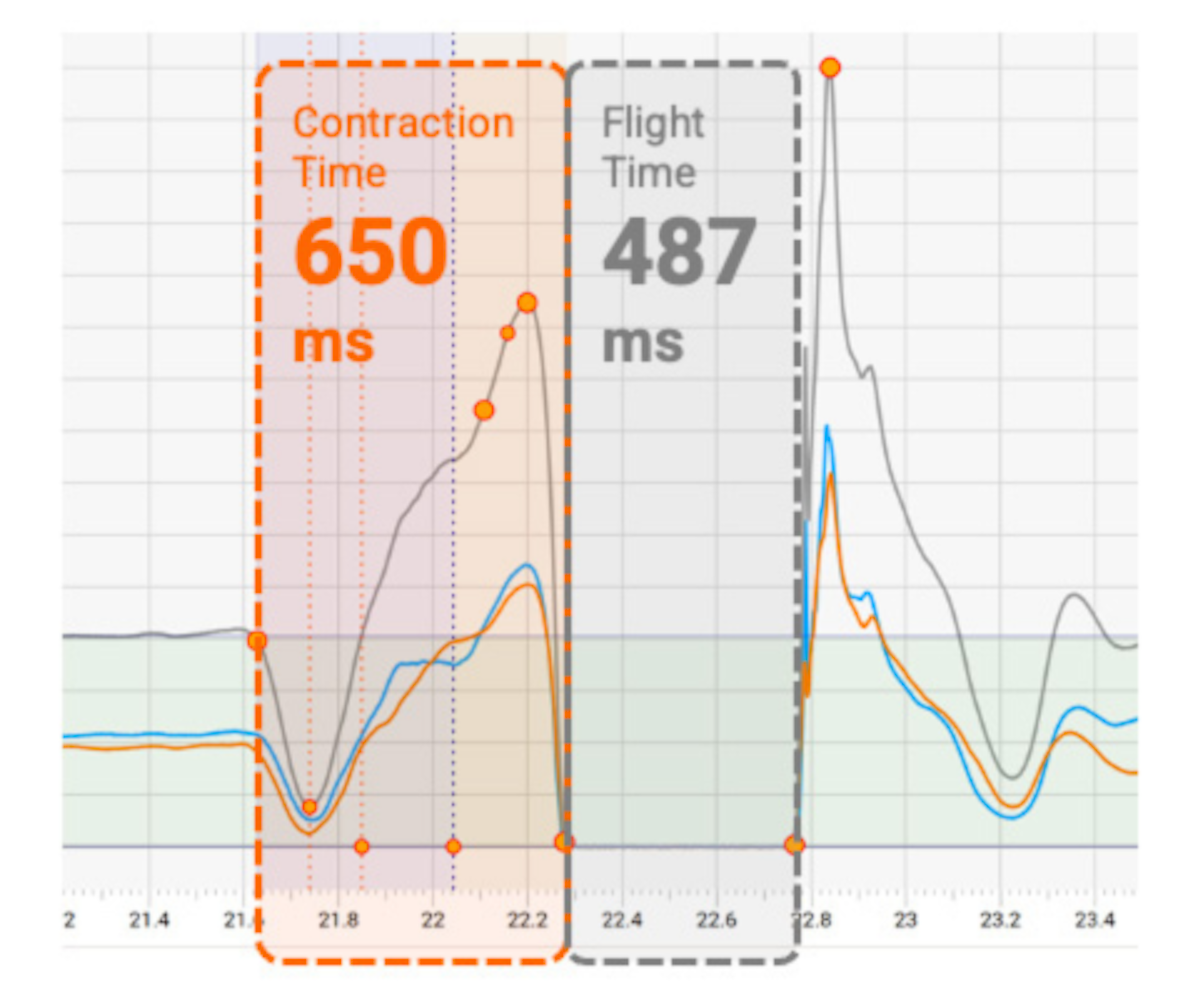 | 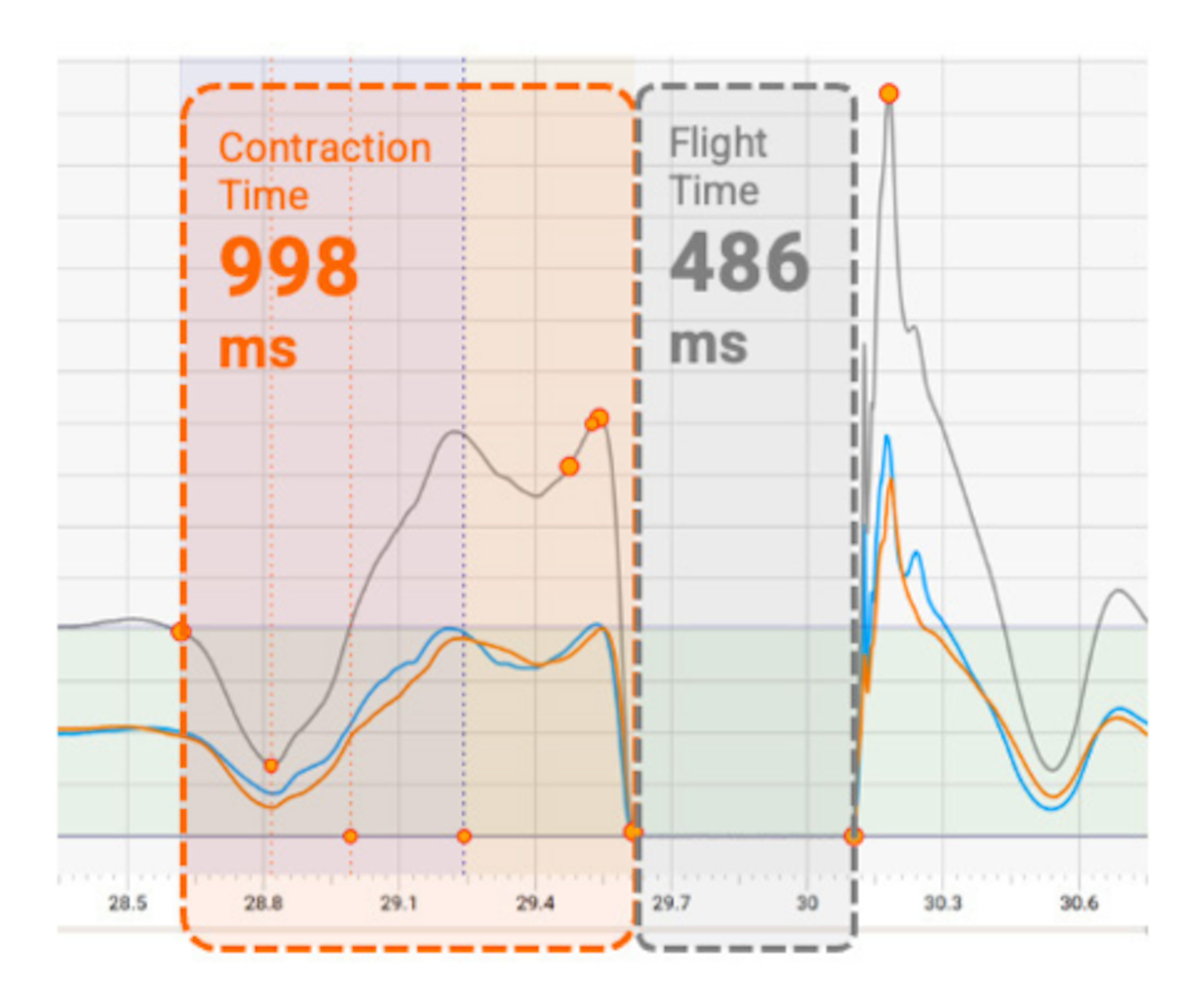 |
| Jump Height (Flight Time) | 29.1 cm (487 ms) | 29.2 cm (486 ms) |
| ÷ | ÷ | |
| Contraction Time | 650 ms | 998 ms |
| = | = | |
| RSI-Modified | 0.45 m/s | 0.29 m/s |
As you can see depicted in the figure above, the jump height and flight time (output) are nearly identical between both jumps, while one jump displays a 50% greater contraction time (input), making for a significant difference in RSI-modified.
Both jumps have nearly identical jump height, while one has a 50% larger contraction time. Therefore, although the outputs are equal, the inputs are substantially different.
Explaining RSI in a different way
Monitoring fatigue using the CMJ can be thought of as analogous to trends in economic inflation and deflation. Think of the input as the monetary value, and the output as the commodity. As currency values fluctuate, so does the price of a product. However, even though the price of a product may change, the product itself remains fundamentally the same. In other words, even though the output is the same, the input required may change. Therefore, even though jump height (output) may remain constant, the contraction time (input) may vary; it is this relationship that can be used to evaluate levels of fatigue or readiness.
even though jump height (output) may remain constant, the contraction time (input) may vary; it is this relationship that can be used to evaluate levels of fatigue or readiness.
The same way that getting the most value for your money is optimal, attaining the largest jump height (output) for the least effort (input) is like “getting the most bang for your buck” – that occurs typically when the neuromuscular system is least fatigued. However, as one becomes more fatigued, they begin to derive less output relative to their input.
attaining the largest jump height (output) for the least effort (input) is like “getting the most bang for your buck” – that occurs typically when the neuromuscular system is least fatigued.
Just like currency values, fatigue can fluctuate, therefore a benchmark is needed to establish a point of reference. This benchmark can be established when an individual is healthy and physically available to perform. Once a benchmark has been established, regular monitoring will generate longitudinal data which can be used to calculate a rolling average. Deviations from the rolling average, in either direction, can be used to make decisions to increase or decrease physical demands on that athlete depending on their RSI-modified.
How do you interpret the results?
Like any metrics, it is vital to evaluate the results in context. Because RSI-modified is a ratio, it can remain unchanged even when both the numerator and the denominator both change. It is important when monitoring RSI-modified to also look at the 2 individual values that comprise RSI-modified – this will provide a complete picture of fatigue or neuromuscular readiness.
It is important when monitoring RSI-modified to also look at the 2 individual values that comprise RSI-modified (jump height & contraction time)– this will provide a complete picture of fatigue or neuromuscular readiness.
How to monitor this over time?
VALD Hub enables a practitioner to see the big picture. Using the various pathways available, one can monitor RSI at both a group and individual level. Below are examples of how RSI-modified can be monitored.
For a group: using the group monitoring dashboard
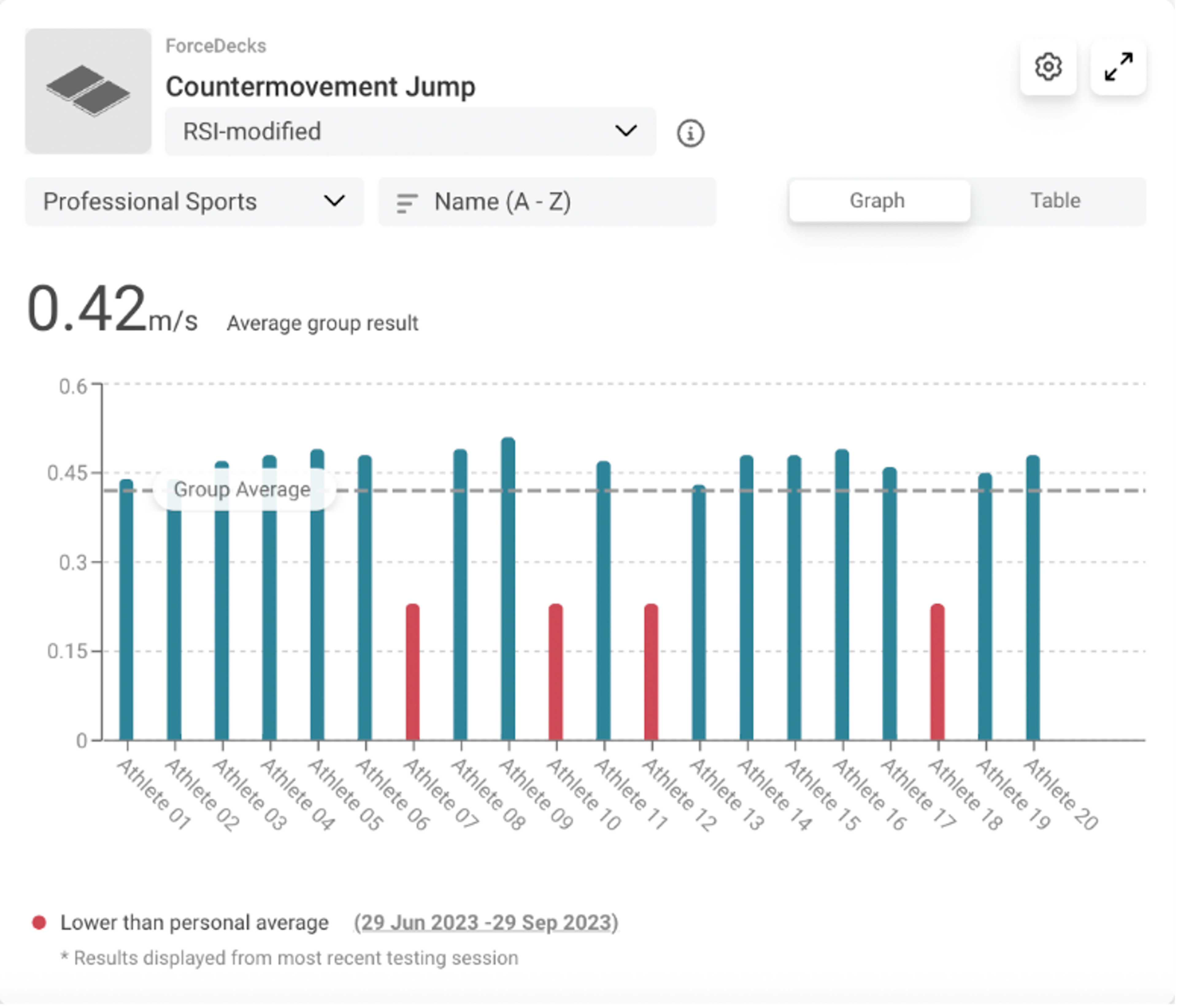
For an individual: using the profile overview page
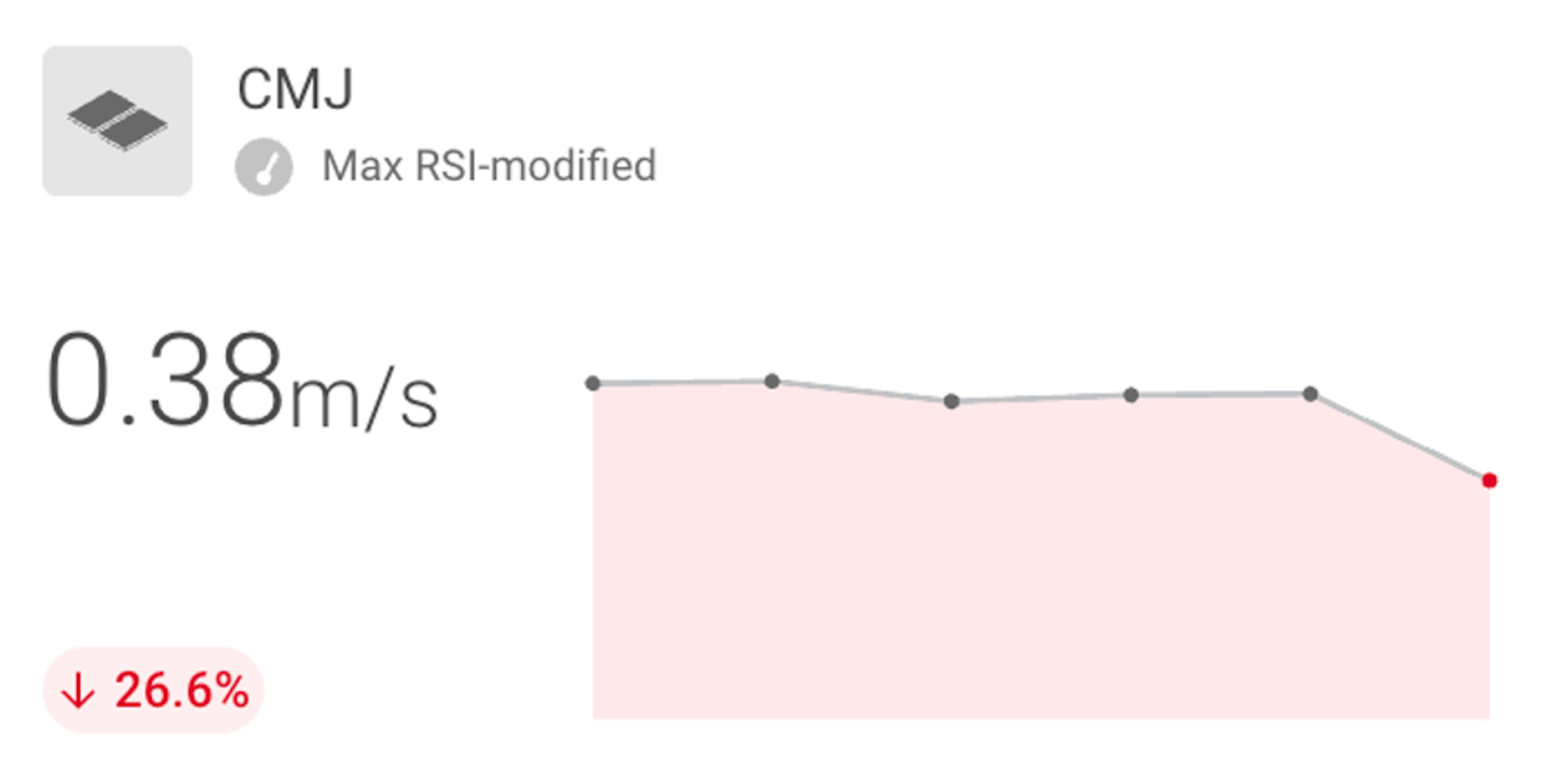
For an individual: using the profile results table
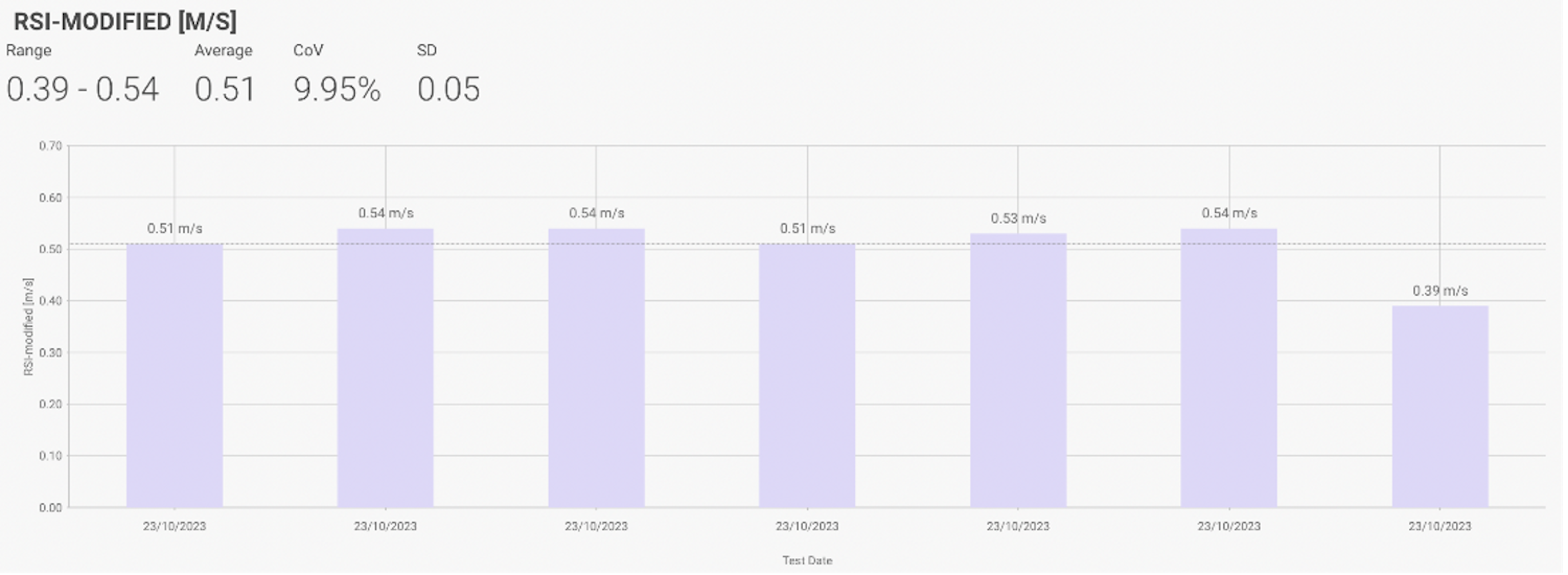
RSI-mod norms:
A frequently asked question around any metric is “what value is good?” VALD has collected an extensive database from a range of populations that help us answer that question. These norms can help athletes formulate their training goals based on expected values for their competition. Additionally, normative values can be helpful as rehabilitation milestones along the return-to-play journey for an athlete.
norms can help athletes formulate their training goals based on expected values for their competition. Additionally, normative values can be helpful as rehabilitation milestones along the return-to-play journey for an athlete.
So, what’s the key takeaway?
RSI-modified is a ratio of “input” and “output”, relating to movement strategy and physical outcome, and is a great measurement technique for monitoring neuromuscular fatigue or athlete readiness. RSI-modified can be measured using the CMJ – which is a quick and easy movement to assess, requiring little skill, and is unlikely to leave athletes sore afterwards.
In order to monitor fatigue, the CMJ should be conducted at regular intervals. For example, some organizations will do it as frequently as every day, others may only do it once or twice a week (e.g. 2 days before a competition, and 1 day after) at regular intervals. The data captured can be used to paint an ongoing picture of how an athlete’s recovery behaves throughout a competitive season.
Learn more about how RSI-modified is used in understanding the Plyometric Continuum.
Sasha is a licensed Physical Therapist and Athletic Trainer, with a background in Strength and Conditioning; he currently works at Alta Allied Health in Brisbane. Sasha uses the VALD technology regularly with patients and athletes he sees in order to help assessment physical impairments, monitor progress through rehab, and inform return to play decision-making. The ForceDecks are a mainstay in Sasha’s clinical practice.
